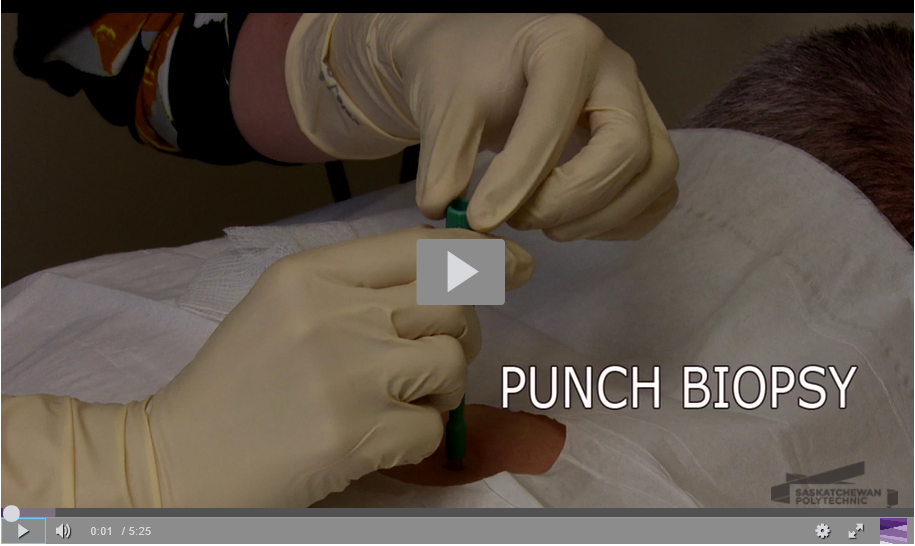Punch Biopsy
Step 1: Health history and physical exam
Assess the duration of time the lesion has been present, location, presence of infected tissue around biopsy site, allergies, bleeding disorders, and ensure the patient is aware that all biopsies result in a scar.
Assess for risk factors for poor wound healing:
• impaired nutritional status
• advanced age
• medications
• diabetes
• peripheral vascular disease
• autoimmune disease
• immunosuppression
• COPD
• CHF
• anemia
• smoking
• substance use
Assess lesions using the ABCDE rule to identify potentially malignant lesions.
Step 2: Position patient comfortably
Step 3: Cleanse the area with chlorhexidine or other approved skin cleanser
Step 4: Anesthetize area
Inject the anesthetic agent at the base of the lesion or area to be biopsied to raise an intradermal welt or wheal. Alternatively, a field block technique can be used if an entire small lesion is to be removed. Using anesthetic with epinephrine will constrict blood vessels and decrease bleeding during the procedure. Avoid use of epinephrine in the digits, ears, and nose due to the risk of ischemia. See chapter titled “Local Anesthesia” for full procedure.
Step 5: Choose the appropriate size punch
Step 6: Perform the punch
i) Use your first finger and thumb to stabilize the skin, stretching it slightly perpendicular to the skin tension lines
ii) Place the punch perpendicular to the skin and apply constant firm and downward pressure with a circular twisting motion
Turn the punch biopsy tool in a circular one direction motion. Do not to reverse the direction as this will help prevent shearing forces that separate the layers of the skin.
A “give” will be felt when the punch has reached the subcutaneous fat. Releasing pressure to soon will not result in a full-thickness cut. Avoid removing the punch to check the progress as this can also result in ragged wound edges or a shredded specimen.
iii) Remove the punch and place downward pressure to the wound edges
iv) Place the specimen in formalin for transfer to the lab
Step 7: Approximate wound edges as needed
Step 8: Apply dressing to incision site
Step 9: Send specimen to the lab

